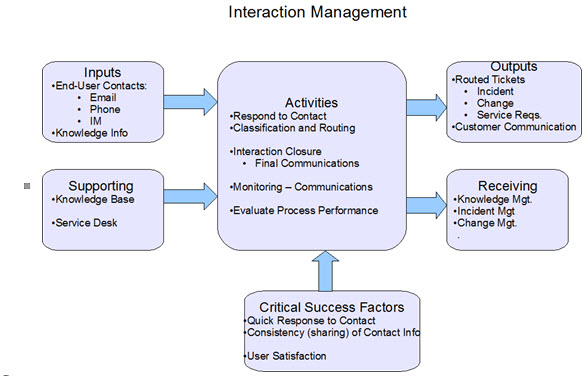Interaction Management

It is a common misperception that Incident Management is ‘the Service Desk
process.’ This is untrue. Incidents are errors in the infrastructure that result
in degradations in service. Therefore Incidents occur everywhere, and everyone
in IT is a potential agent of Incident Management.
A separate Interaction Management process further allows for separate management of the communications with end-users from the troubleshooting activities of Incident Management. This allows for an easier consideration of tiering the Service Desk; which may be appropriate for some organizations.
Goal of Interaction Management
• Effective routing and processing of inbound and outbound
communications
• Provision of interaction information to all persons working with a
contact to ensure service consistency.
Benefits of Interaction Management
- Dedicated Service Desk Process -- Improved Service Desk Measures
- Common Entry for End-User Contact
- Current Status of Interactions Readily Available - Status is available for all Interactions; with appropriate process data from downstream processes
- Provision of clear and consistent contact information to all agents
- Crisper process metrics -- results from separating Interactions from Incident and Change records.
Objectives for Interaction Management
| Objective | Measure |
| SD functions as sole point of end-user contact |
|
| Interaction sources appropriately managed |
|
| Consistency of Information Requests |
|
| Process adequately staffed |
|
Metrics - CSFs and KPIs for Interaction Management
| CSF | KPIs |
| Interaction Volumes |
|
| Quick Response |
|
| Improve productivity for Business and IT |
|
| Uphold User Satisfaction |
|
A Sample Interaction Process Flow

